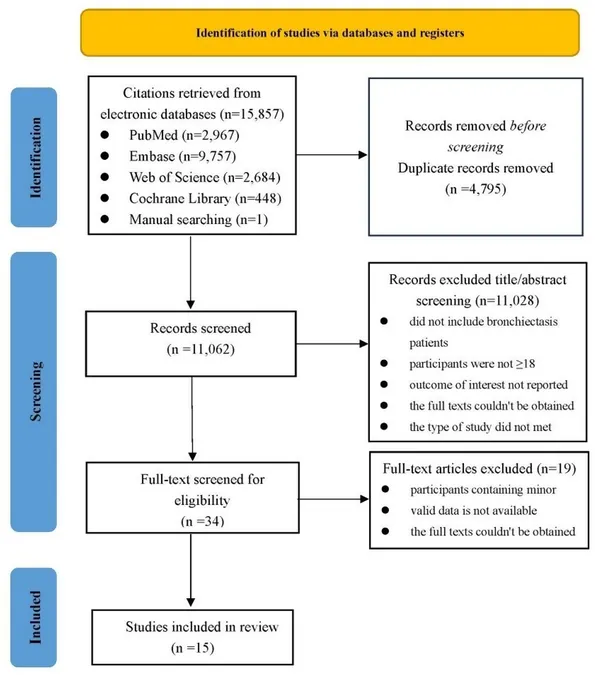
Surprising Statistics Unveiled: The Prevalence of Bronchiectasis Among Adults
2024-09-30
Introduction
A recent comprehensive meta-analysis has shed light on the alarming global prevalence of bronchiectasis, a chronic lung condition that is more common than previously thought. By analyzing data from 15 population-based studies involving more than 437 million individuals, researchers have concluded that the pooled prevalence of bronchiectasis is a staggering 680 cases per 100,000 people. This revelation raises concerns about the global health impact of this condition, particularly in specific regions and demographics.
Study Methodology
Following rigorous standards set by the Meta-analysis Of Observational Studies in Epidemiology (MOOSE) and the Preferred Reporting Items for Systematic Reviews and Meta-Analyses (PRISMA), the researchers meticulously reviewed several databases, including PubMed and Cochrane Library, to gather relevant studies from inception until May 31, 2024. The inclusion criteria focused on observational studies involving adult patients diagnosed with bronchiectasis, while excluding those with insufficient data or duplicate publications.
Diverse Findings Across Continents
The meta-analysis revealed notable geographical variations in the prevalence rates of bronchiectasis. While the overall rate stood at 680 per 100,000, specific figures highlighted a significant disparity across countries: the United States reported 478 per 100,000, South Korea 886, and China 759. This geographical discrepancy may correlate with various factors, including environmental influences and the prevalence of tuberculosis (TB)—a leading underlying cause of bronchiectasis, particularly in Asian nations.
Furthermore, the study highlights that bronchiectasis is disproportionately more common in women than men, a trend consistently observed across various studies in countries like China, Germany, and the UK. Researchers suggest that this could be linked to specific etiologies such as non-tuberculous mycobacterial infections, which occur more frequently in females.
Additional Risk Factors and Implications
The analysis also delved into the impact of lifestyle choices such as smoking. Surprisingly, the estimated prevalence of bronchiectasis was 3,958 per 100,000 among never-smokers, 4,677 among ever-smokers, and 3,630 among current smokers, indicating a complex relationship that warrants further investigation.
Moreover, individuals with a low Body Mass Index (BMI) exhibited a higher prevalence of bronchiectasis, emphasizing the possible interplay of nutritional status and lung health. Notably, patients with comorbidities such as TB and inflammatory bowel disease (IBD) showed an alarming prevalence rate, reinforcing the necessity for integrated healthcare approaches.
Critical Need for Knowledge Expansion
The findings urge for expanded research to understand better the factors influencing bronchiectasis across different populations. Establishing disease-specific registries, much like those in Italy and India, would significantly aid in comparing clinical characteristics and prevalence rates globally. Such collaborative health research efforts could unravel the associations between bronchiectasis, demographic factors, and underlying health conditions.
Conclusion
This meta-analysis presents a concerning portrait of bronchiectasis as a more common illness than previously understood, stressing the urgent need for increased awareness and improved management strategies. As bronchiectasis is often accompanied by various comorbidities, the healthcare community must prioritize understanding its complexities to enhance patient outcomes. In an era where global health is paramount, addressing the growing burdens of bronchiectasis should be a top priority for health policymakers and researchers alike.
Stay tuned for more insights as we unravel the mysteries of chronic lung diseases and their impact on global health!



 Brasil (PT)
Brasil (PT)
 Canada (EN)
Canada (EN)
 Chile (ES)
Chile (ES)
 España (ES)
España (ES)
 France (FR)
France (FR)
 Hong Kong (EN)
Hong Kong (EN)
 Italia (IT)
Italia (IT)
 日本 (JA)
日本 (JA)
 Magyarország (HU)
Magyarország (HU)
 Norge (NO)
Norge (NO)
 Polska (PL)
Polska (PL)
 Schweiz (DE)
Schweiz (DE)
 Singapore (EN)
Singapore (EN)
 Sverige (SV)
Sverige (SV)
 Suomi (FI)
Suomi (FI)
 Türkiye (TR)
Türkiye (TR)